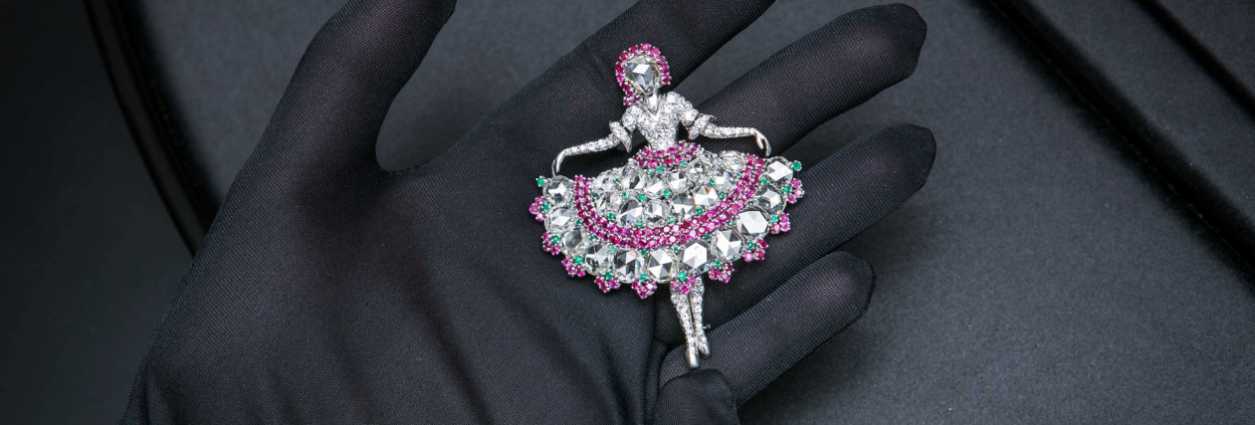Van Cleef & Arpels’ iconic ballerina
By egor Tuesday, 10 October 2017 11:52 AM

The beginnings of Van Cleef & Arpels’ iconic ballerina clips sprang from an artistic collaboration between Maurice Duvalet, a French-born designer who moved to America at the end of World War I; John Rubel, the House’s manufacturer who had just emigrated from Paris; and Van Cleef & Arpels whose original inspiration was deeply rooted by Louis Arpels’ passion for classical ballet and opera.
Studying the various graceful forms and positions of ballet performed by some of the world’s most prestigious ballerinas of the era, Duvalet drew sketch after sketch until he fashioned the first group of ballerinas, whose glittering faces were always represented by a rose-cut diamond. The dancers’ costumes also featured mostly rose-cut diamonds accentuated by rubies, emeralds and sapphires mounted in platinum, making the jewel really come alive with color and sparkle. What’s more, the stones were reputedly from the Spanish Crown jewels, which had been taken to Mexico during political unrest and, later, sold at auction in New York.
With the first ballerina clips produced in the early 1940s as the U.S. emerged from the Great Depression, these darling creations were enthusiastically received by the House’s wealthy American clients who saw the darling ballerinas as symbols of hope and joy for better days to come. In France, the brooches enjoyed two decades of excited fanfare until their production ceased at the end of the 1960s. With their distinct style, the French ballerinas differed significantly than their American counterparts: sculpted mainly in gold and donning turquoise, ruby and sapphire – rarely ever diamonds.
Van Cleef & Arpels’ love of ballet did not end with their ballerina clips: in 1961, Claude Arpels asked the Russian dancer and choreographer George Balanchine to arrange a balled called “Jewels.” A ballet in three acts, the first is an illustration of France, symbolized by emeralds; the second part is about New York and the New World, represented by the vibrant red of ruby; the last act concerns Old Europe and pays homage to Imperial Russia – symbolized by the diamond.
The brooch featured in today’s article, a sapphire and diamond ballerina brooch by Van Cleef & Arpels, New York, circa 1951, is one of the more extraordinary examples of the House’s legendary ballerina clips, this one also being perhaps one of my favorites. Its diamond-coated skirt seems to gracefully float in the air, light as a feather, swaying ever so elegantly, while the arms gently demonstrate third position. Strong and balanced, the ballerina’s sapphire central core radiates the velvety blue hues throughout the jewel’s figure. This is certainly one of the House’s prized ballerina pieces, preserving its close relationship with the timeless art of ballet.





























Add new comment